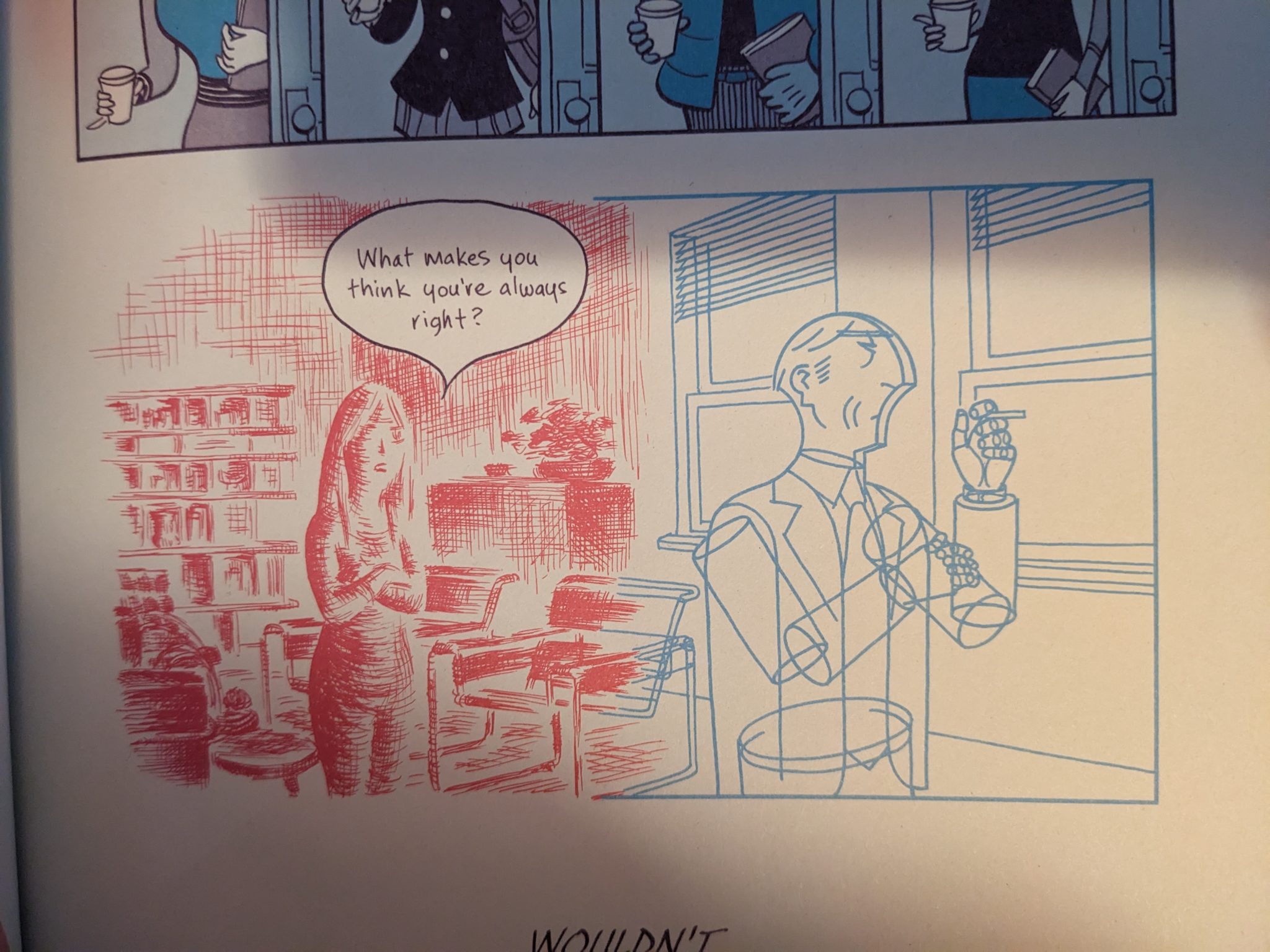Study group - edges 1
This week, we begin a new unit in the Love Life Drawing study group, focusing on lines and edges. In the first half of the exercise, we were to pick 3 references from artists we admire and examine how they use edges and lines in the composition.
In Bill Sienkiewicz’s portrait of Bruce Lee, above, the strongest value contrast pairs with strong lines to make his torso almost luminous. The radiance over his hair is not quite as sharply delineated, but the slight fuzziness here suggests a little bit of movement. His arms are in motion — here there is still that strong value contrast, but the line work has become kinetic, almost frantic. There are motion lines describing an arc joining the fists, and another that suggests movement in the head. Maybe he’s just dropped into place.

Mazzucchelli uses different line and rendering styles for each character, something that illustrates their inner life. In this image, the architect on the right sees the world reduced to simple shapes; the woman on the left lives in a world of light and texture. The two simply cannot see eye to eye. Because of the simplicity, the architect stands out starkly. But Mazzucchelli is using dozens of directional lines to guide our eyes to the woman, with the lines from the shelves, blinds, and chairs. Note that he has simply dialed down the values in a halo around her. He’s keeping the contrast strong so we don’t lose her in the background.

Frank Frazetta drawing a giant, jumping lady. A wealth of flowing detail and directional devices pull attention to the woman’s face, down her body, through the leg and finally to the strangely smaller male figure. Both figures have similar fine-lined edges, but the male figure has much heavier shading, which pushes him to a different plane. The perspective is weird; he feels like he doesn’t belong.
Part two of the exercise asked us to use our preferred medium to make a variety of edges. This kind of open-ended thing often leaves me struggling, so I just made a bunch of kinds of marks.

